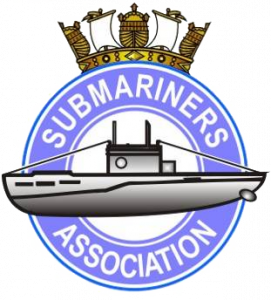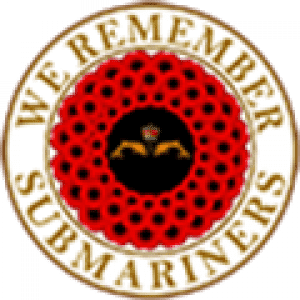Able Seaman
Robert Paul
"Bob"
EVANS
,
MiD
Royal Navy
21

Robert Evans was born in Camberwell, London, on 14 January 1922, the son of Ralph George and Rose Catherine Evans (née Smith), of Brixton, London.
In June 1941, nineteen year old Robert ‘Bob’ Evans was working on a stud farm in Wokingham, Berkshire, from where he went to HMS ST VINCENT to enlist in the Fleet Air Arm. He was rated Naval Aircraftsman 2nd class, and put on the reserve list.
He was called up on 26 September 1941, attached to HMS DAEDALUS. After time in HMS ST VINCENT, DRAKE and RALEIGH he was in HMS DOLPHIN in April 1942 when he responded to a call for volunteers for ‘dangerous and hazardous missions.’ This led to his attachment to the submarine depot ship HMS TITANIA and the start of his training as a diver for the two-man torpedoes (chariots) being developed at that time. He was trained and qualified as a Charioteer No.2 Crewman including several successful training attacks against the battleship HMS RODNEY in Loch Cairnbawn.
Two RN commanders, ‘Slash’ Sladen and ‘Tiny’ Fell, themselves former submarine commanding officers, had set up a rigorous training and development programme. From Fort Blockhouse the training continued in the almost inaccessible lochs on the West coast of Scotland before ending up on Shetland. There, at Scalloway, was the centre of the ‘Shetland Bus’ operation, a clandestine ferry service run by Norwegian sailors and fishermen, using traditional fishing boats, to carry SOE agents and their equipment outwards and refugees homeward from Nazi occupied Norway.
It was decided that an attack should be launched against the battleship TIRPITZ which was threatening Arctic convoys, using two chariots which were to be carried from Shetland to Trondheim Fjord aboard the Norwegian fishing vessel, Arthur, with Norwegian Leif Larsen as skipper, plus a crew of three – this was Operation TITLE. The passengers were six charioteers under Sub Lieutenant ‘Jock’ Brewster.
Once inside the fjord the chariots were lifted off Arthur’s deck, lowered into the water and secured to cables beneath the hull so as to avoid detection by German patrol boats. Unfortunately, Arthur was hit by two rogue waves when almost in sight of the target. The severe motion caused the shackles linking the chariots to the cables to part, with the loss of the chariots and the unfortunate abandonment of the mission.
It was now impossible to return due to serious engine problems so, after scuttling Arthur, the men came ashore, split into two teams and made their way on foot across Norway, suffering badly due to Winter conditions before reaching the comparative safety of neutral Sweden. Bob’s party, led by Larsen, ran into a frontier patrol not far from the border and in a shoot-out, Bob was injured and had to be left to the mercy of the Germans in the expectation he would be treated as a prisoner of war under the terms of the Geneva Convention. He was reported as ‘missing’, his parents being informed of this, and for two years great efforts were made by the authorities to establish his whereabouts but without success.
In fact he was taken to a local hospital where his wounds were treated. He was interrogated by the Gestapo then sent to Grini detention centre in Oslo. It was there he met up with five Royal Engineers, survivors of the unsuccessful glider-borne attempt (Operation FRESHMAN) to put the Vemork heavy water plant out of action. After three weeks there they were told they were to be taken before a higher German authority and for the journey they would have to be blindfolded and their hands tied behind their back. They were taken a two hour lorry journey to Trandum forest where they were lined up before a firing squad, executed and buried in a hastily dug shallow grave.
It was not until the German forces in Norway capitulated in the Spring of 1945 that the graves were found, the bodies exhumed and identified and the men’s remains given a decent burial in Oslo Western Civil Cemetery (Grave 1.8.7). See a photograph of his grave here.
Bob’s parents finally learned of their son’s death in a letter from the Admiralty dated 8 September 1945.
Bob’s execution was a direct result of Hitler’s Commando Order of 18 October 1941. Enraged by the commando raid (Operation BASALT) on the German occupied Channel Island of Sark and the shooting of a few soldiers, Hitler ordered that any Allied commandos captured should be shot immediately.
At the post war Nuremberg War Crimes Trials General Keitel was found guilty of various war crimes including the trial and execution of Bob Evans and Keitel was himself executed.




2 responses
A review by Francis Dickinson of “Operation Title” by Glyn Evans
This is a readable and at times moving account of Operation Title, the attempt to disable the German battleship Tirpitz in Norway using human torpedoes or “Chariots”. Operating these manned torpedoes required intensive training, skill and stamina. The Title mission did not succeed for reasons beyond the control of those attempting it, and the story has some of its sharpest focus on the difficult escape by the courageous Anglo-Norwegian team involved. In particular, the author focuses on the experience and the tragic death of one of them, Able Seaman Robert Paul Evans. Having been shot twice in the course of the escape attempt, AB Evans was eventually and tragically executed in captivity by the Germans as a result of Hitler’s infamous Commando Order.
The book’s author Glyn Evans became intrigued about the story of AB Evans when he spotted the surname he shares in Chalmers’ biography of Admiral Sir Max Horton. Modern writers about human torpedoes and midget submarines are all successors to 1953’s classic “Above Us The Waves” by CET Warren and James Benson. Glyn Evans makes clear he is not telling the Operation Title story for the first time, and acknowledges drawing on accounts of the Title mission in books such as Robert Lyman’s “The Real X-Men”. Readers should also be aware that only a limited part of the book relates to submarine content, given the Chariots were transported to Norway by motor fishing vessel, and the overland escape. The real merit of the book lies in the way it allows the reader almost to join with the author as he evaluates original sources to understand the experiences and fate of AB Evans, of whom just one photograph survives. The book will appeal to those with an interest In building a true picture from limited and sometimes sparse records. There are detailed notes at the back (listed alphabetically) which reference some important submarine figures. There is also a foreword by Friends RNSM member David Parry, which rightly highlights the benefit of seeking junior participants’ perspectives in submarine operations.
The author has had to make the most of relatively limited biographical information on AB Evans, although this book’s role in highlighting his bravery and that of others shot in contravention of the Geneva Convention is to be welcomed. This is one of many stories which emphasise the importance of the recent work to inaugurate a new bronze Roll of Honour at Kylesku for the men of the 12th Submarine Flotilla who died on missions such as Operation Title. That memorial’s organisers have meticulously listed against these names the Mentions in Despatches which in many cases represented the official recognition of extraordinary heroism by submariners who lost their lives on varied special missions. AB Robert Evans’ name and the hard-won MiD letters next to it take their rightful place on that valuable memorial.
I just read about this gentleman in the book “The Shetland Bus” and had to find out more. What bravery.